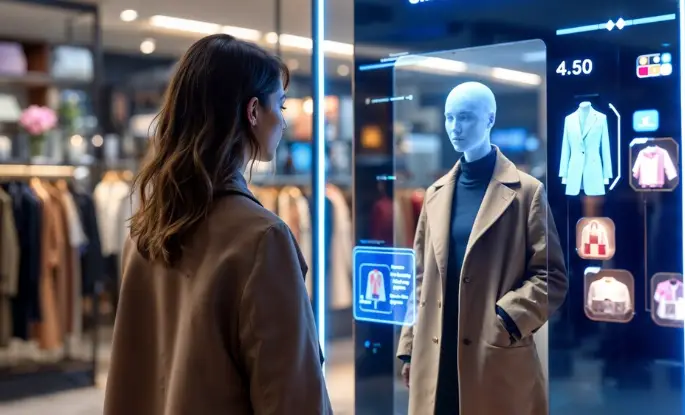As brands and consumers navigate an increasingly digital world, interactive content has emerged as one of the most powerful tools for engagement. In 2025, static content like simple articles or one-dimensional ads no longer captures the attention of consumers in the way it once did. Instead, people are drawn to experiences that invite participation, encourage exploration, and allow them to become active participants in the narrative of a brand. Interactive content, ranging from polls and quizzes to augmented reality (AR) experiences and live-streamed events, is setting the standard for how brands can engage their audiences, creating a more memorable and impactful brand connection.
The appeal of interactive content lies in its ability to break down the barrier between the consumer and the brand, transforming passive viewers into active participants. As people become accustomed to personalized experiences, they also seek out content that feels dynamic and responsive to their actions. Interactive content meets this need by adapting to user inputs in real-time, providing a more immersive and satisfying experience. For example, interactive quizzes allow users to receive tailored insights, while polls let them voice their opinions and see how they compare with others. These experiences go beyond delivering information; they foster a sense of engagement and relevance, making the audience feel valued and understood.
One of the most compelling developments in interactive content is the integration of augmented reality (AR) and virtual reality (VR). In 2025, brands are leveraging AR to bring digital experiences into the physical world, enhancing the way consumers interact with products and services. Through AR, consumers can visualize products in their own spaces before making a purchase, which is especially valuable for industries like home decor and fashion. VR, on the other hand, offers fully immersive experiences that transport users into virtual environments. From virtual stores where customers can browse products to VR events where they can interact with brand representatives and other attendees, these experiences offer a new level of engagement that goes beyond the traditional online browsing experience.

Shoppable content is another significant trend within the realm of interactive content. In 2025, the line between content and commerce is blurring, with brands creating interactive shopping experiences directly within their content. Shoppable videos, where viewers can click on items to add them to their cart or explore product details, allow consumers to move seamlessly from inspiration to purchase. This kind of content turns engagement into action, as it provides a direct path from exploration to transaction. By integrating shopping into the content itself, brands remove friction from the purchasing process, making it easier for consumers to act on impulse and buy products they are genuinely interested in.
Interactive content is also revolutionizing social media engagement. In 2025, social media platforms are evolving to support a wider variety of interactive features, from polls and quizzes to live-streaming and stories with interactive elements. Instagram, Facebook, and TikTok have all introduced tools that allow brands to create polls, ask questions, and even incorporate augmented reality filters that encourage user interaction. These tools are not only fun for users but also provide valuable insights for brands, who can gauge consumer preferences and gather feedback in real-time. With social media being one of the primary channels for brand engagement, the ability to create interactive experiences on these platforms is essential for reaching a broader audience and sustaining their interest over time.
Live-streaming, one of the most interactive forms of content, has also gained tremendous popularity in 2025. Brands are using live-streaming to host product launches, Q&A sessions, and behind-the-scenes tours that provide viewers with an authentic, real-time connection to the brand. Unlike pre-recorded videos, live-streaming allows for a level of spontaneity and direct interaction that resonates with audiences. Viewers can ask questions, share comments, and receive responses instantly, creating a sense of immediacy and intimacy that enhances brand loyalty. The popularity of live-streaming has led many brands to invest in creating high-quality live content that aligns with their brand values and provides meaningful value to their audience.
“Brands are moving away from static newsletters and are incorporating interactive elements such as quizzes, surveys, and embedded videos that allow recipients to engage directly within the email.”
Data collection and personalization are critical components of interactive content in 2025. As users engage with interactive elements, brands are able to gather data on their preferences, behaviors, and interests. This data allows for a deeper understanding of the audience and informs future marketing strategies, making it possible to deliver even more relevant content. By analyzing how users interact with content, brands can tailor experiences to specific segments, creating personalized journeys that enhance engagement. For instance, if a user consistently interacts with content related to eco-friendly products, the brand can prioritize showcasing sustainability-focused items in future interactions. This level of personalization is only possible with interactive content, as it captures real-time insights that traditional content cannot provide.
Gamification is another powerful trend shaping the future of engagement in 2025. Brands are incorporating game-like elements into their content to make experiences more engaging and rewarding. Gamified content can take many forms, from point systems and leaderboards to challenges and rewards for participation. This approach taps into the human desire for achievement and competition, encouraging users to spend more time interacting with the brand. Gamification is particularly effective in building brand loyalty, as it incentivizes repeat engagement and creates a sense of accomplishment. In 2025, brands are increasingly using gamification as a way to foster a sense of community among their customers, creating experiences that not only entertain but also build deeper connections with the brand.
User-generated content (UGC) is another valuable form of interactive content that drives engagement in 2025. Brands are encouraging their audiences to share their own experiences with products, services, and campaigns, turning customers into advocates. Interactive UGC campaigns invite users to participate by creating and sharing their own content, which can be featured on the brand’s social media channels or website. This approach not only creates a sense of community but also enhances credibility, as potential customers are more likely to trust content created by their peers. In addition, UGC allows brands to showcase a variety of perspectives and experiences, providing a richer and more diverse representation of their products and values.

Interactive content is also redefining email marketing in 2025. Brands are moving away from static newsletters and are incorporating interactive elements such as quizzes, surveys, and embedded videos that allow recipients to engage directly within the email. This approach increases open and click-through rates, as recipients are more likely to interact with content that is engaging and participatory. Interactive emails also provide valuable insights into user preferences, as they capture real-time data on how recipients respond to different types of content. With the evolution of email marketing platforms, creating interactive emails has become more accessible, allowing brands of all sizes to implement these strategies and connect with their audience in new ways.
The growing emphasis on interactive content is reshaping the role of storytelling in marketing. In 2025, brands are no longer simply telling stories; they are inviting consumers to be a part of those stories. Interactive storytelling allows audiences to explore and influence the narrative, creating a more immersive and impactful experience. For example, a travel brand might create an interactive story where users can “choose their adventure,” selecting different destinations, activities, and experiences as they navigate through the content. This type of storytelling not only captures attention but also fosters a deeper emotional connection, as consumers feel that they are an active participant in the brand’s journey.
As the digital landscape continues to evolve, the demand for interactive content is likely to grow. In 2025, brands that embrace interactive content are not only meeting the expectations of modern consumers but are also positioning themselves at the forefront of digital engagement. This shift towards interactive, personalized, and immersive experiences signals a new era in marketing, where the focus is on building meaningful connections and creating memorable moments that resonate with audiences long after the interaction ends.


